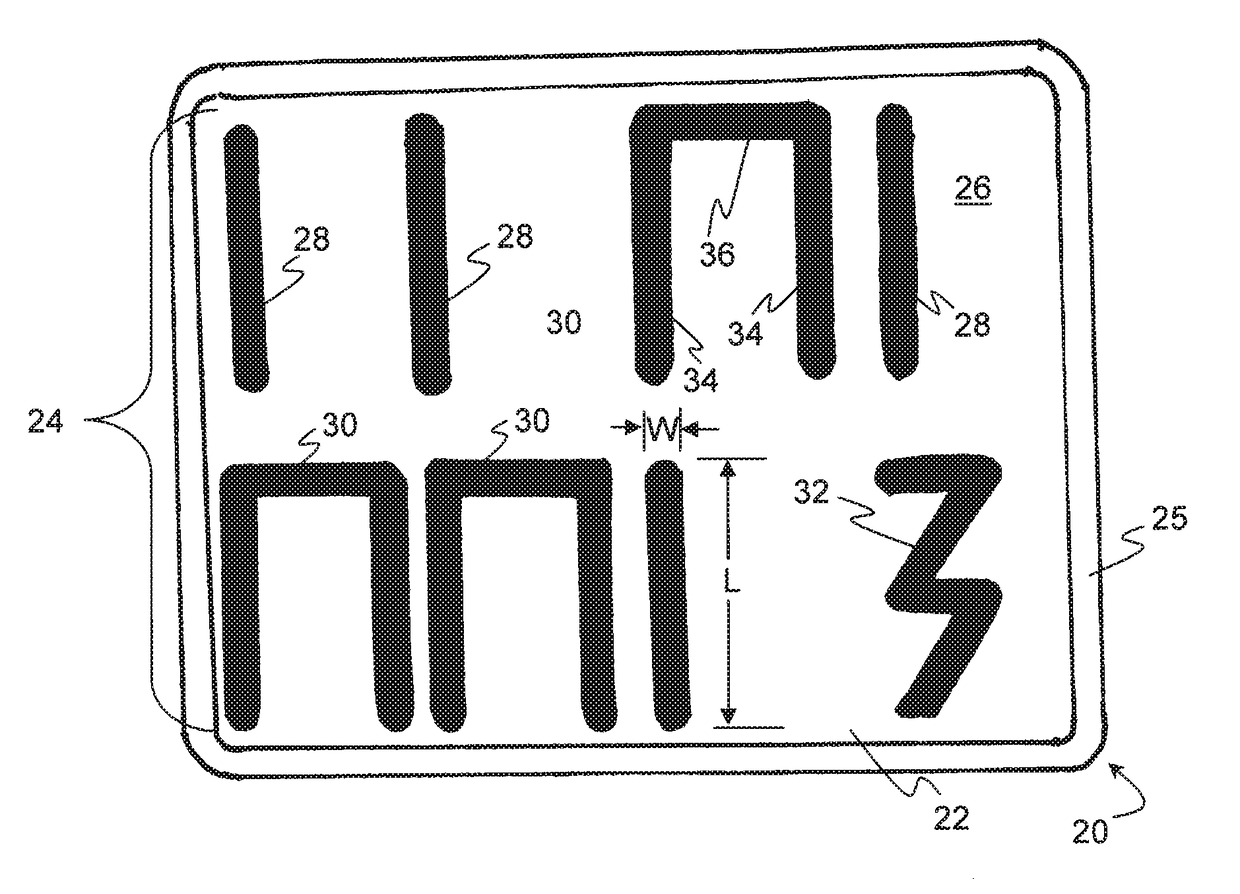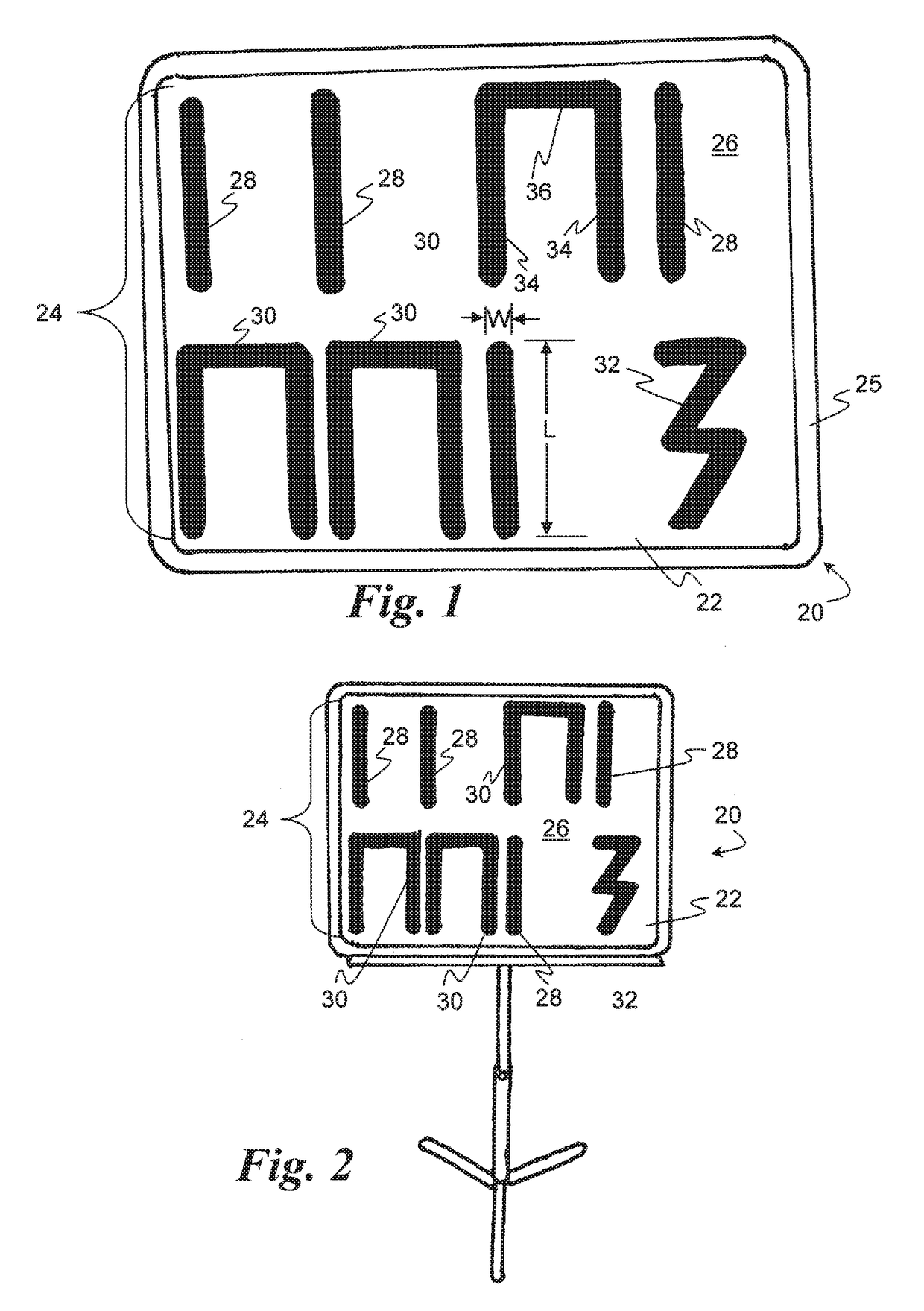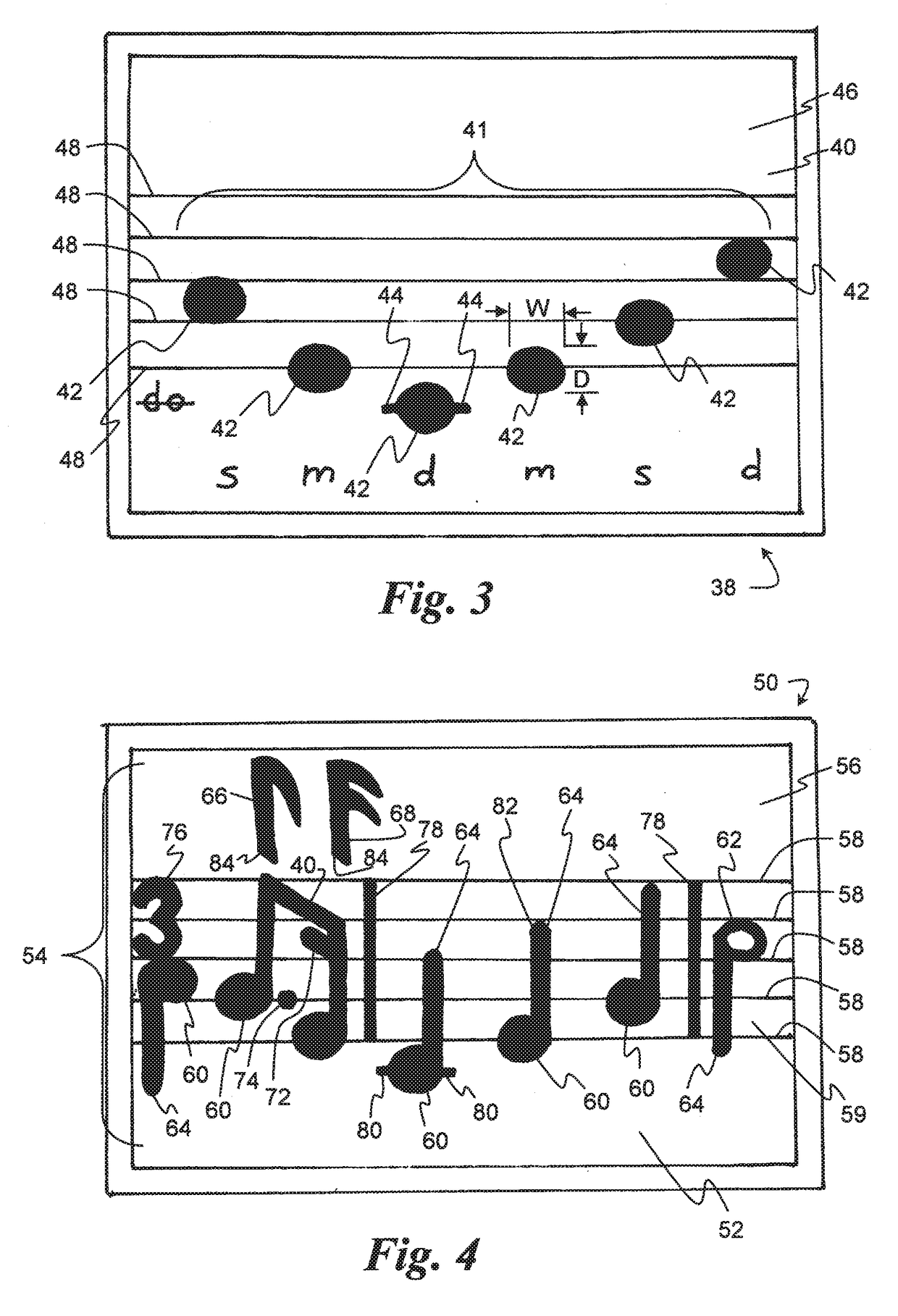Manipulative system for teaching musical notation
a manipulative system and music notation technology, applied in the field of musical notation systems, can solve the problems of slowing down the creative process, inability to use the computer to compose in the music classroom, and inability to develop computerized music notation systems. achieve the effect of easy notation of pitch and/or rhythm, simple structure, and improved development efficiency
- Summary
- Abstract
- Description
- Claims
- Application Information
AI Technical Summary
Benefits of technology
Problems solved by technology
Method used
Image
Examples
Embodiment Construction
[0040]A system 20 for teaching rhythm notation to beginning students is depicted in FIGS. 1 and 2. System 20 generally includes a workspace 22, and manipulative notation member set 24. In an embodiment of the invention, workspace 22 may be a common commercially available white board 25 presenting a smooth magnetic surface 26 that can be erasably marked using dry-erase markers (not shown).
[0041]Primary manipulative notation member set 24 generally includes a plurality of shorthand rhythm notation members, such as quarter-note members 28, eighth-note members 30, and quarter-rest member 32. In embodiments of the invention, quarter-note members 28 and quarter-rest member 32 may have a single piece unitary wood or plastic body. Eighth-note members 30 may be similarly formed from a single piece of wood or plastic, or alternatively, may be formed using two separate spaced-apart vertical members 34 connected by a horizontal member 36 permanently adhered to the vertical members 34. As depict...
PUM
 Login to View More
Login to View More Abstract
Description
Claims
Application Information
 Login to View More
Login to View More - R&D
- Intellectual Property
- Life Sciences
- Materials
- Tech Scout
- Unparalleled Data Quality
- Higher Quality Content
- 60% Fewer Hallucinations
Browse by: Latest US Patents, China's latest patents, Technical Efficacy Thesaurus, Application Domain, Technology Topic, Popular Technical Reports.
© 2025 PatSnap. All rights reserved.Legal|Privacy policy|Modern Slavery Act Transparency Statement|Sitemap|About US| Contact US: help@patsnap.com



